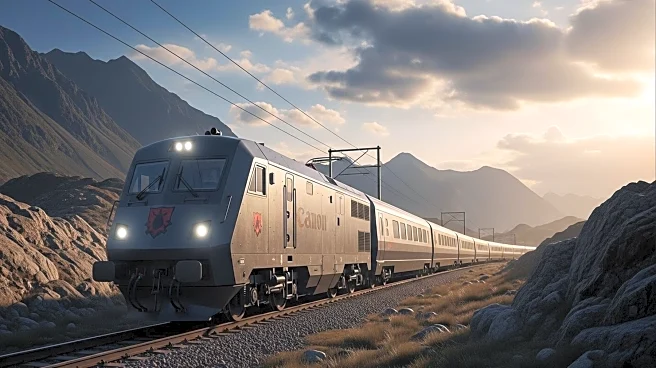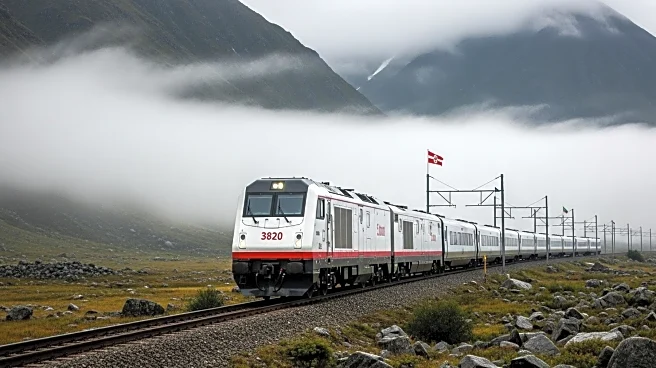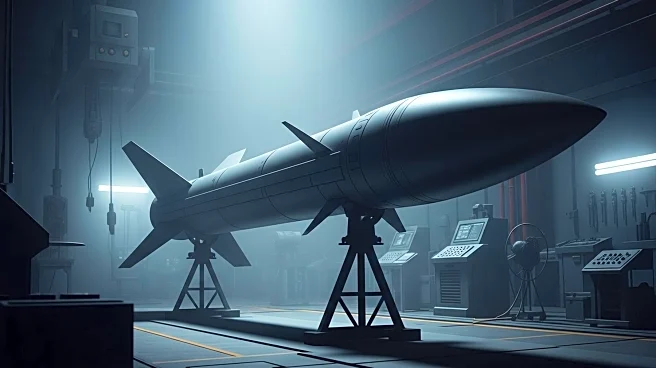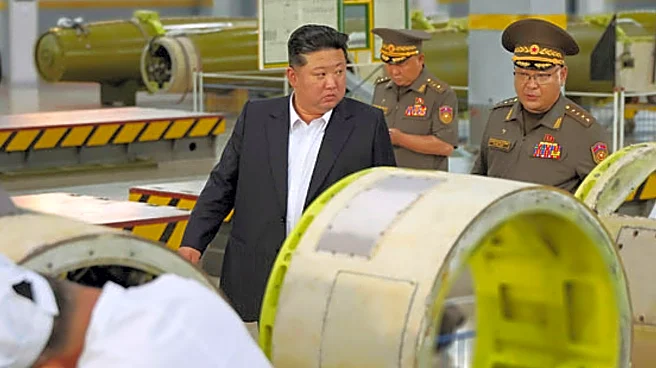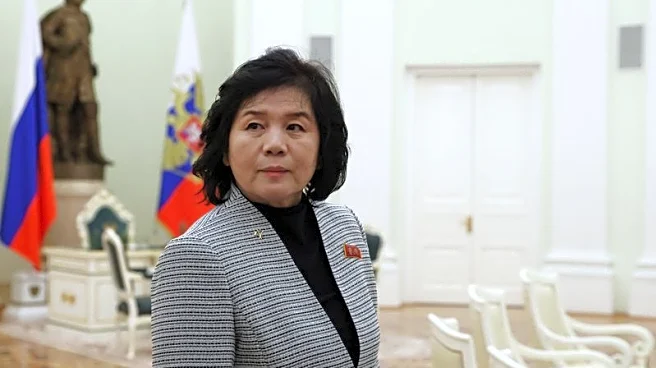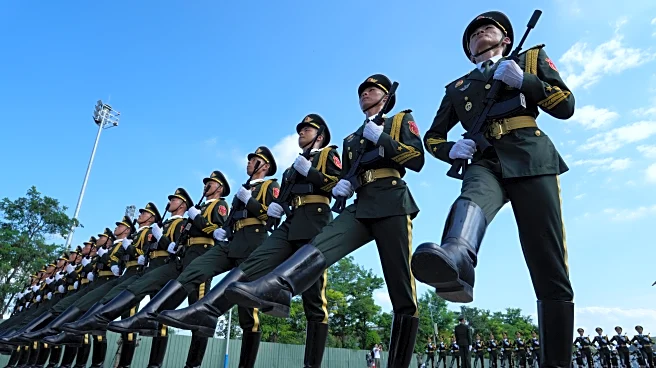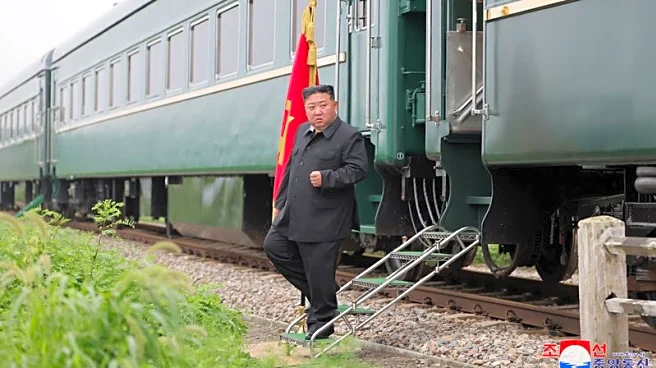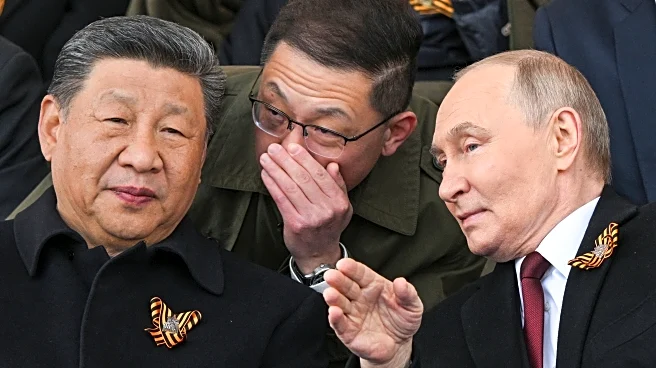What's Happening?
North Korean leader Kim Jong-un has traveled to Beijing on his signature green train to attend a military parade commemorating Japan's surrender in World War II. The train, described as a 'moving fortress,' is bulletproof and travels at a speed of 60 kilometers per hour, making the journey approximately 20 hours long. This mode of transport has been favored by North Korean leaders for decades due to its safety and comfort, accommodating a large entourage and providing space for meetings. Despite Kim's ability to fly, he prefers the train for long-distance travel, as evidenced by his previous trips to China and Vietnam for summits with President Trump.
Why It's Important?
Kim Jong-un's attendance at the military parade in Beijing marks a significant diplomatic engagement, as it is his first major multilateral event during his 14-year rule. The gathering includes key figures such as Chinese leader Xi Jinping and Russian President Vladimir Putin, highlighting a potential alignment among these leaders, who are often seen as challengers to U.S. influence. This event could signal a shift in North Korea's foreign policy priorities, particularly as it seeks to strengthen ties with China, its largest trading partner, amidst strained relations. The parade also underscores North Korea's strategic positioning in the geopolitical landscape, especially in relation to its support for Russia's military efforts.
What's Next?
The military parade in Beijing may lead to further diplomatic interactions among the attending leaders, although no private trilateral meetings have been confirmed. North Korea's focus on improving relations with China could result in increased economic and military cooperation, potentially impacting regional stability. Observers will be watching for any announcements or agreements that may arise from this gathering, as well as any shifts in North Korea's diplomatic stance towards other nations, including the U.S. and South Korea.
Beyond the Headlines
The use of the armored train by Kim Jong-un highlights the unique travel preferences and security measures of North Korean leadership. This mode of transport reflects the country's emphasis on safety and control, as well as its historical reliance on rail travel for diplomatic missions. The train's features, including meeting rooms and communication equipment, illustrate the importance of maintaining a secure environment for discussions and decision-making during international trips.
